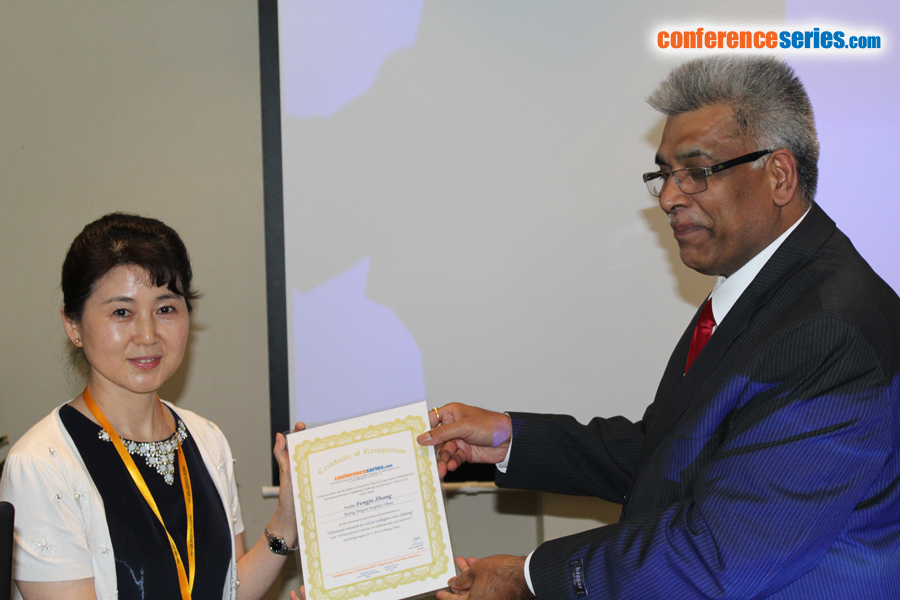Fengju Zhang
Beijing Tongren Hospital, Capital Medical University in China
Title: Advanced research in scleral collagen cross-linking
Biography
Biography: Fengju Zhang
Abstract
This overview presentation consists of the research of biomechanical effects and safety of scleral collagen cross-linking (CXL) by Riboflavin/ultraviolet A on human and rabbit eyes, the research of biomechanical effects and safety of scleral collagen cross-linking (CXL) by Riboflavin/blue-light on human and rabbit eyes and the research of biological parameters of scleral collagen cross-linking (CXL) by Riboflavin/ultraviolet A on rhesus eyes. Collagen cross-linking in our research was performed with topical Riboflavin solution (0.1%) followed by irradiation with ultraviolet A (370 nm, 3 mW/cm2) for 30 min on equatorial parts of human, rabbit and rhesus sclera and with topical Riboflavin solution (0.5%) followed by irradiation with blue light (460 nm; 14.6, 19.5, 22.5, 26, 32.5 and 40.6 mW/cm2) for 20 min on equatorial parts of human and rabbit sclera. Stress-strain measurements of scleral strips were performed with a biomaterial tester to evaluate the biomechanical effects. Dark-adapted ERG was repeatedly applied on bilateral eyes of rabbit and rhesus and optical coherence tomography (OCT) examination was performed on bilateral eyes of rhesus to evaluate the safety of CXL in vivo. Histological analysis, terminal deoxynucleotidyl transferase dUTP nick-end labeling, the measurement of outer nuclear layer thickness and transmission of electron microscopy were performed on human and rabbit eyes to evaluate the safety of CXL in vitro. The mechanical and biochemical stability of human and rabbit scleral tissues was statistically increased after the scleral CXL by ultraviolet A and blue-light (P<0.05). The dark-adapted ERG amplitudes were statistically reduced to 1 week, 1 month and 3 months postoperatively by ultraviolet A and blue-light on rabbit eyes (P<0.05), however there was no statistically changes in dark-adapted ERG amplitudes (1 month postoperatively) and thickness of retina and choroid (3 months postoperatively) by ultraviolet A on rhesus eyes (P>0.05). Compared with the control eyes, apoptotic cells and ultrastructural changes can be found in the retinal layers of scleral cross-linked eyes of rabbits in vitro. The results above indicate that biomechanical strength of sclera may be enhanced by CXL with Riboflavin/ultraviolet A and blue-light. However, the safety evaluation is not certainty enough for the postoperative visual function of rabbit and rhesus eyes. Further study should be performed to set up a long-term safe protocol of scleral CXL for clinical prevention from progressive myopia.



